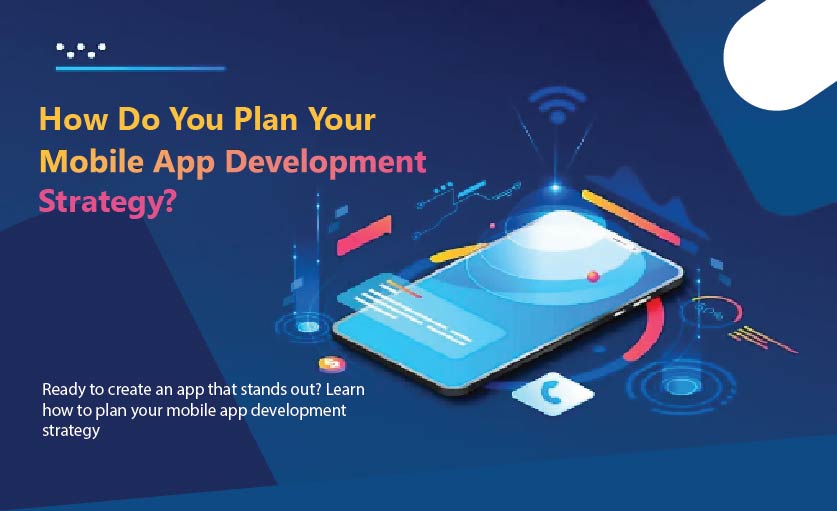In today’s digital age, mobile apps have become an essential tool for businesses and individuals alike. Developing a successful mobile app requires careful planning and a well-defined strategy. To ensure that your app meets its objectives and resonates with your target audience, it is crucial to have a comprehensive mobile app development strategy in place.
Importance of a Mobile App Development Strategy
A mobile app development strategy acts as a roadmap that outlines the goals, target audience, features, and timeline for the app’s creation. It helps you stay focused, make informed decisions, and streamline the development process. A well-executed strategy can significantly increase your chances of developing a successful and profitable app.
Step 1: Define Your App’s Purpose and Objectives
Before diving into the development process, it’s vital to clearly define the purpose of your mobile app. Ask yourself: What problem does it solve? What value does it provide to users? Once you have a clear understanding of your app’s purpose, set specific, measurable, achievable, relevant, and time-bound (SMART) objectives. These objectives will serve as benchmarks throughout the development process and help you stay on track.
Step 2: Identify Your Target Audience
Knowing your target audience is key to building a successful mobile app. Conduct thorough market research to understand your potential users’ preferences, demographics, and pain points. Identify their needs and tailor your app’s features, design, and user experience to cater to their specific requirements. By understanding your target audience, you can create an app that resonates with them and meets their expectations.
Step 3: Conduct a Competitor Analysis
To stand out in a crowded app market, it’s essential to know your competition. Conduct a thorough analysis of similar mobile apps in your niche. Identify their strengths, weaknesses, and unique selling points. This analysis will help you identify opportunities and differentiate your app from the competition. By learning from competitors’ successes and failures, you can refine your app’s features and position it effectively in the market.
Step 4: Plan Your App’s Features and Functionality
Based on your objectives, target audience, and competitor analysis, define the core features and functionality of your mobile app. Determine which features are essential and prioritize them. It’s crucial to strike a balance between providing a rich user experience and keeping the app lightweight and user-friendly. Consider incorporating unique and innovative features that differentiate your app and add value to your users’ lives.
Step 5: Create a Wireframe and Prototype
A wireframe is a visual representation of your app’s layout, navigation, and user interface. It serves as a blueprint for your app’s design and functionality. Create a wireframe to visualize how different elements will be organized and interact within the app. Once the wireframe is ready, develop a clickable prototype that simulates the app’s user experience. This will help you validate your ideas, gather feedback, and make necessary adjustments before moving forward with the development phase.
Step 6: Choose the Right Technology Stack
Selecting the right technology stack is crucial for the success of your mobile app. Consider factors such as platform compatibility, scalability, security, and development time when choosing the programming languages, frameworks, and tools for your app. Consult with experienced developers or a technical expert to ensure that you make informed decisions and leverage the most suitable technology stack for your app.
Step 7: Plan Your Development Timeline and Resources
Creating a realistic timeline is vital for managing the development process effectively. Break down the development tasks into smaller milestones and allocate resources accordingly. Consider factors such as development time, testing, iterations, and deployment when estimating the timeline. Identify the required resources, including developers, designers, and testers, andallocate them appropriately to ensure smooth progress throughout the development phase.
Step 8: Implement Agile Development Methodology
Adopting an Agile development methodology can greatly enhance the efficiency and flexibility of your mobile app development process. Agile emphasizes iterative development, collaboration, and continuous improvement. By breaking down the development into sprints, you can quickly adapt to changing requirements, gather feedback, and make necessary adjustments along the way. This iterative approach ensures that your app evolves based on user feedback and market dynamics.
Step 9: Test
Thorough testing is essential to ensure the quality and reliability of your mobile app. Conduct comprehensive testing at each stage of development, including unit testing, integration testing, and user acceptance testing. Identify and fix any bugs or usability issues to provide a seamless user experience. It’s also crucial to involve real users in the testing phase to gather valuable feedback and validate your app’s performance in real-world scenarios.
Step 10: Deploy and Monitor
Once your app is thoroughly tested and ready, it’s time to deploy it to the app stores. Follow the guidelines and procedures of the respective app stores, such as the Apple App Store and Google Play Store. Pay attention to metadata, app descriptions, keywords, and visuals to optimize your app’s discoverability. After deployment, monitor key performance indicators, user feedback, and analytics to measure the success of your app and identify areas for improvement.
Step 11: Iterate and Improve
The development process doesn’t end with app deployment. Continuously gather user feedback, monitor user behavior, and analyze app performance to identify areas for improvement. Regularly release updates and new features to keep your app fresh and relevant. Listen to user suggestions and adapt your app to their evolving needs and expectations. Iteration and improvement are crucial for maintaining user satisfaction and keeping your app competitive in the ever-evolving app market.
Conclusion
Planning your mobile app development strategy is a critical step in building a successful app. By defining your objectives, understanding your target audience, conducting competitor analysis, and following a systematic approach, you can create a mobile app that resonates with users, meets their needs, and achieves your business goals. Remember, a well-planned strategy sets the foundation for a successful mobile app development journey. So take the time to plan, iterate, and deliver an exceptional app experience for your users.


Recent Comments